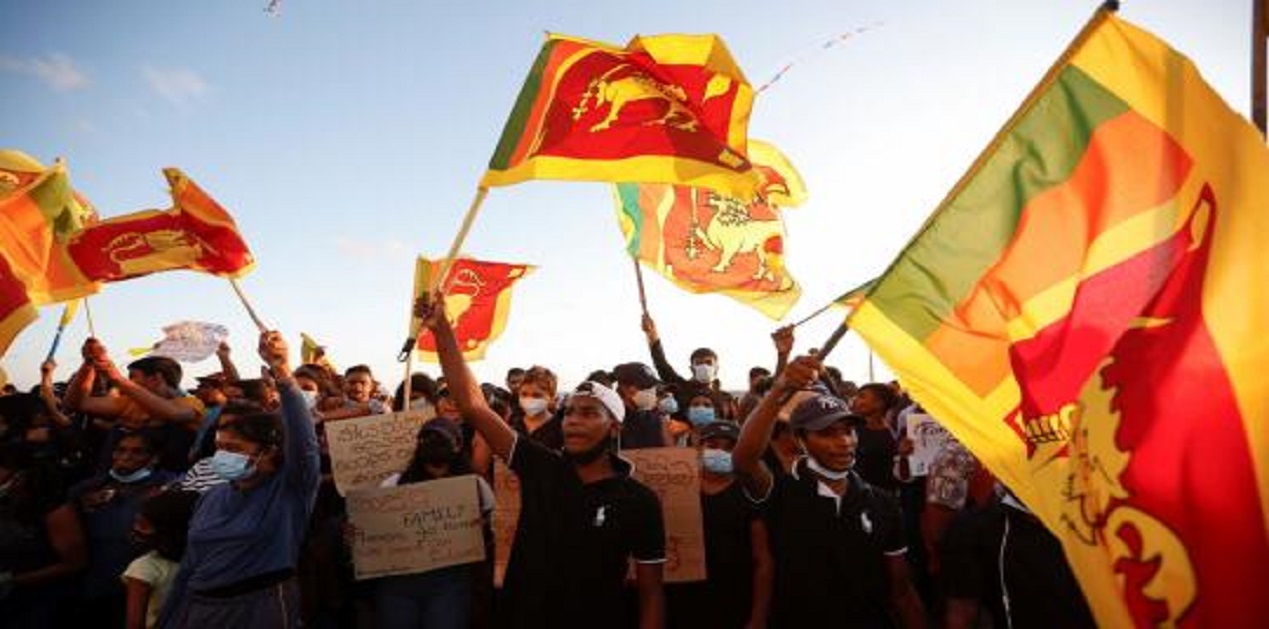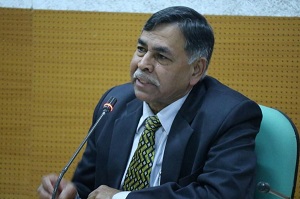Sri Lanka has in the past experienced separatist movements, in which the Tamils and Sinhalese were involved in ethnic conflicts for quite some time. Though this dark phase is over now, there still remains simmering disquiet without of course any threat of destabilising the system. It is in India’s interests that political stability is maintained in this neighbouring country. At present, the island nation’s economy is under severe distress. India has an obligation to come in rescuing the nation.
In 2022, the island nation was hit by an unprecedented financial crisis, the worst since its independence from Britain in 1948, due to a severe paucity of foreign exchange reserves, sparking a major political turmoil in the country which led to the ouster of the all-powerful Rajapaksa family. It also led to humanitarian crisis in the island nation.
The representatives of the three creditor countries, India, Japan and France, including Finance Minister Nirmala Sitharaman, held a press briefing on the margins of the annual spring meetings of the World Bank and the International Monetary Fund (IMF) in Washington on 13 April 2023. The following day, the three countries announced a common platform for talks among bilateral creditors to coordinate restructuring of Sri Lanka’s debt. It was hoped that this would serve as a model for solving the debt woes of middle income economies. Currently, there are about a dozen countries in debt distress or at high risk and therefore such agreements are very much needed.
With Japan in the lead and as the G-7 chair for this year, it remained unclear if Sri Lanka’s biggest bilateral creditor – China – will join the initiative. Terming the gathering of a broad-based group of creditors as ‘historic’, Japan’s Finance Minister Shunichi Suzuki announced the committee was open to all creditors. Sri Lanka’s central bank governor opined that single platform for talk is preferable for sharing information and coordinating policy. French Director General of the Treasury Emmanuel Moulin was also enthusiastic of the initiative.
Sri Lankan President Ranil Wickremesinghe joined the conference virtually. He assured Sri Lanka’s commitment to engage with all creditor nations and other stakeholders in a transparent manner based on the principles of comparable treatment.
For the past few months now, the island nation of 22 million has been facing severe economic crisis. Rising diesel prices have hit many industries. To bail out Sri Lanka and help ease the energy crisis India’s oil major Indian Oil Corporation (IOC) supplied 40,000 metric tonnes of fuel to help the country come out from the economic crisis worsened by depleted foreign reserves. In January, India announced a $ 900 million loan to Sri Lanka to build up its depleted foreign reserves and for food imports, amid a shortage of almost all essential commodities in the country.
The initiative to restructure the country’s external debt came after the island nation secured a $2.9 billion package in March from the International Monetary Fund to tackle its huge debt burden. The Washington-based global lender had made Sri Lanka’s debt restructuring a prerequisite for granting the $2.9 billion bailout. For Sri Lanka’s President Wickremesinghe, it was a significant victory. It was hoped that this could lead to a gradual stabilisation of the economy and the government’s turnaround from the bankruptcy.
The initiative to help Sri Lanka tide over economic distress is laudable as the middle income economy could not apply for relief under the G-20’s common framework for debt treatments, which targets only low-income countries. Therefore the onus fell on India, Japan and France to come up with an alternative scheme, leading to the creation of the new platform.
The IMF bailout, the 17th in Sri Lanka’s history, was approved following prolonged discussions over Colombo's unsustainable debt. According to official data of Sri Lanka government, the country owes $7.1 billion to bilateral creditors, with $3 billion to China, followed by $2.4 billion to the Paris Club and $1.6 billion to India. When it was unable to raise external finance for a while, it resorted to deficit financing. This is likely to average inflation in 2023 rise to 28.5 per cent and the economy to shrink 3.1 per cent. The government also needs to renegotiate more than $12 billion of debt in Eurobonds with overseas private creditors, and $2.7 billion on other commercial loans.
As a neighbouring country, India is committed to support Sri Lanka in dealing with its current economic crisis. India’s Finance Minister stressed India’s commitment to facilitating an early debt restructuring process. She called for close coordination among creditors which was critical to restoring Sri Lanka’s debt sustainability.
The initiative for multilateral cooperation regarding the debt restructuring process among the creditors was therefore of critical importance to Sri Lanka. Collaboration among creditors was important to ensure transparency and equality in the debt restructuring discussions.
In fact, prior to the IMF announcement of bailout package and the multilateral cooperation platform by India, Japan and France, Sri Lanka had already begun to roll out a reform package to get its economy under control. But debt restructuring is realised to be of utmost priority. The IMF bailout package shall help external creditors as Sri Lanka is in arrears to all of them. Therefore sustaining Sri Lanka’s economy and help putting it back on track was felt to be in everyone’s interest. Policy planners in Sri Lanka ought to be on their guard as the country’s primary difficulty is that its aggregate external debt as a percentage of the GDP is 74 per cent, making it very vulnerable to perceptions and ratings.
As the editorial in Times of India on 15 April noted “one of the aims of Lanka’s economic restructuring package is to lower its annual debt service in foreign exchange from the current 9% of GDP to 4.5% by 2027. This step will require the country to lower its public debt from its current level of 122% of GDP”. It is to be seen if China, the major creditor, comes on board. The G-20 grouping also must come out with concrete measures that are workable and help the island nation.
Sri Lanka is geographically more important to China than many other debt-ridden countries. Since China has other strategic interests in the region, any measures that Beijing chooses to take to help Sri Lanka ought to be watched carefully and judged accordingly. China has invested in a harbour in southern Sri Lanka and in Colombo Port City, a new commercial development in the capital. Chinese investment in such strategic locations in the island has the hidden objective to strengthen its strategic foothold with a view to secure its maritime commerce, including shipping of oil and cargos. What India needs to be careful is to be on its guard as Chinese presence in the island nation’s strategic locations gives a foothold to it, a matter that India would have reason to worry. It thus transpires that China’s policy towards Sri Lanka is due to geopolitical considerations as well as financial ones.
It would be a win-win situation for all stakeholders if Sri Lanka debt deal can set aside geopolitical rivalries so that the interests of the debt-distressed nations are protected. Indeed it was encouraging that India, France and Japan could get China, the world’s largest bilateral creditor, on board to agree with its geopolitical rivals in the Paris Club and India. It remains unclear if this is a one-off or a permanent shift for China.
The International Monetary Fund approved a $3 billion loan to Sri Lanka a month ago as the first step in restructuring its debt. This is a significant victory for Sri Lanka’s President Ranil Wickremesinghe and could lead to a gradual stabilisation of the economy and the government’s turnaround from bankruptcy.
This being said, Sri Lanka ought to remain sceptical of China’s intentions, which are often hidden. A segment of people in Sri Lanka hold an opinion that views China’s approach suspiciously as China had earlier only committed to a two-year moratorium on Sri Lanka debt, unlike the 10-year moratorium proposed by Western creditors and India. China had linked its stance with that of the World Bank, a position disapproved by many in the West. China sensed that it was losing support, especially after the Rajapaksa family with whom China was closely associated was deposed from power. Its approach changed as it was not prepared to yield space to India which was viewed sympathetically as India had provided $4 billion in credit. This helped Sri Lanka to survive when it had no foreign currency and was suffering a severe economic contraction. India needs to be watchful of every move of China as its own strategic interests ought to be protected while helping Sri Lanka to overcome its economic crisis.
(The paper is the author’s individual scholastic articulation. The author certifies that the article/paper is original in content, unpublished and it has not been submitted for publication/web upload elsewhere, and that the facts and figures quoted are duly referenced, as needed, and are believed to be correct). (The paper does not necessarily represent the organisational stance... More >>
Image Source: https://www.arabnews.com/node/2106996/world











Post new comment